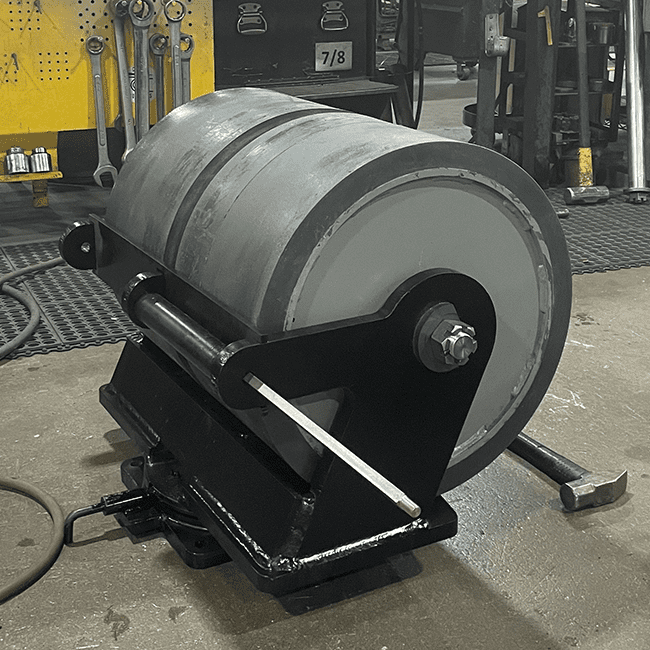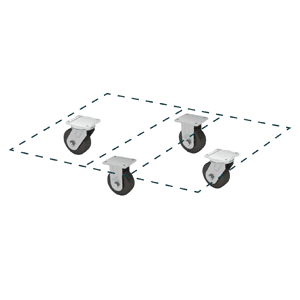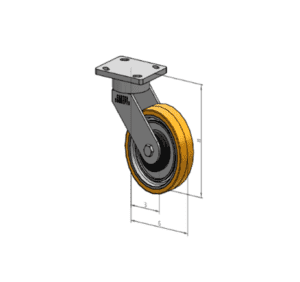

There are many factors to think about when choosing a custom heavy duty caster. How much weight you can pull without increasing injuries or limiting productivity, the conditions and cleanliness of your floors, as well as other environmental conditions and special considerations.
While all these are important, there is a question you must answer first. And that is, “What is the most important thing you are trying to accomplish?” Once you know what you are trying to accomplish, ergonomic, economic, and other questions can be better answered. From there, you can now begin the process of selecting the right casters.
First off, there are some specifications you will need to have when you reach out to your preferred caster supplier. These include:
1. Load capacity
2. Swivel or rigid or both
3. Overall height. From the base of the wheel to the top of the top plate
4. Bolt hole pattern if it needs to match a drawing or existing casters top plate
5. Distance the cart is going to be moved, speed cart is moved (especially in tugged situations) and frequency of movement.
6. Flooring/surface. What will this cart be rolling on?
7. Unique requirements. Any other unique parts of the application. (Clean room requirements, chemical wash down, extreme exposure heat/cold, is it going to be shock loaded ETC.)
So, with that laid out, let’s talk about load capacity. Load capacity is measured by the total weight of the cart and material. It is important to know the approximate weight so the load can be moved safely.

4-WHEEL-diamond-pattern-2-swivels-2-rigids-caster-configuration.
Choosing rigid or swivel casters is another simple but important detail. You can do all swivels, swivel and rigid combinations, and swivel with swivel locks. It just depends on your setup.
The distance the cart is moving is another critical step in figuring out the best caster setup for your application. Especially if your carts are in continuous use or are going to be used in a high-speed towing application. Next is, “what surface is your casters rolling on?” When choosing the proper caster this comes into play because some wheels are better than others for different floor conditions.
For example, on a finished concrete surface, you would most likely want to go with a polyurethane wheel because of the ergonomics and floor protection.
With asphalt, you would want to go with a pneumatic depending on your load whereas, for rough concrete, you could go with a steel wheel.
This all varies by the application so please consult a professional when making this decision.
Finally, when it comes to choosing a caster, it is important to have as many details about the application to ensure that you are getting the right casters for the job at hand. Custom heavy duty casters are used in extremely heavy load circumstances and when you have size constraints.
 Most people don’t realize that they can prevent injuries and create a positive work environment by easing the task of moving carts from one place to another. Some companies and employees work against themselves all day. I have seen cases where the push-pull forces can cost companies millions of dollars because of employee fatigue.
Most people don’t realize that they can prevent injuries and create a positive work environment by easing the task of moving carts from one place to another. Some companies and employees work against themselves all day. I have seen cases where the push-pull forces can cost companies millions of dollars because of employee fatigue.
It’s also not helping matters that for some companies, the words custom casters can have negative connotations. Why? Because most people associate custom with long lead times and a big expense.
In reality, the lead times for custom casters can be as low as two weeks or less, and the cost is about the same as an off-the-shelf product. I would challenge anyone who needs to solve an issue or prevent problems in the future to contact us. Let’s discuss what a custom caster looks like for your application.